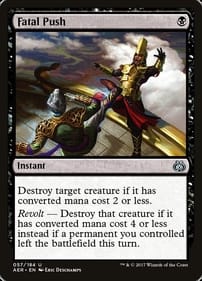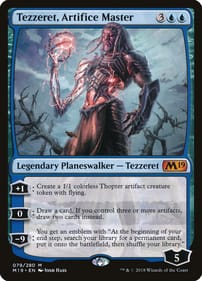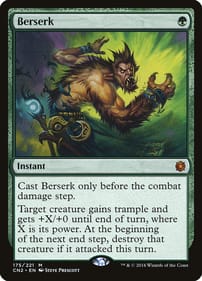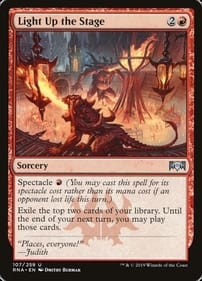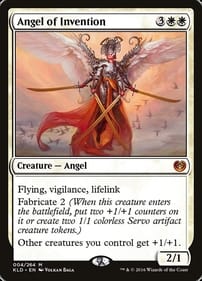Read Local, Shop Local, Attend Local Cons
By Dan Brown I’ll be honest with you: I don’t know how the Trump tariffs are going to affect the price of comics, if at all. But if you’re looking for ways to put your comic-book dollars back into the local economy, be it Southwestern Ontario or Canada, here are a few ideas for how to do so. For starters, you can patronize local comics stores like L.A. Mood, which employs Londoners and supports the local pop-culture ecosystem by hosting events like Godzilla Day. The Forest City has always been blessed with more than its share of places where you can pick up your favourite comic titles, and the same goes for all of Southwestern Ontario. Here’s a fun road trip idea for when the warm weather arrives: Make it your goal to visit all the comic stores in this corner of Canada, which will mean travelling to such communities as Sarnia, Windsor, Chatham, Kitchener, and Guelph. I did so a few summers back and it was a blast! Along the same lines, when convention season starts back up, you don’t need to go all the way to San Diego (or even Toronto) to hang out with other comic enthusiasts.London has cons aplenty, including Forest City Comicon – which this year moves to a new date (November 2) and venue (the Lamplighter Inn). Other shows to keep in mind include the Chatham Kent Expo, which happens April 26 and 27. I realize bigger cons get bigger names. That doesn’t necessarily make for a better experience, though. For example, almost every DC or Marvel panel I’ve attended at Fan Expo in previous years can be summed up in one sentence: “Our company has such cool stories coming out soon, but if we told you the details it would spoil them.” The difference at a smaller event is the friendlier vibe, which is much warmer. There is no substitute for meeting comic fans or cosplayers in your own backyard! And what’s that, you say you also want to read local at this moment in our country’s history? It’s easy to make that happen by throwing your support behind specific creators and publishers. There are guys like Byron’s Derek Laufman, the graphic novelist responsible for Bot 9, RuinWorld, and Crimson Fall. Fans can buy his books and art directly from his website. Laufman also has a Patreon page, which offers exclusive first looks at the projects he is working on. Other Forest City creators to check out include Diana Tamblyn, A Jaye and Alison Williams, Scott MacDougall and D.S. Barrick (who publish under the banner of River Donkey Adventures), Sam Maggs, and don’t forget Bryan Lee O’Malley. Among the cartoonists with connections to the wider Southwestern Ontario scene are Jeff Lemire, Seth, Scott Chantler, and Joe Ollmann. Or perhaps you want to support Canadian publishing houses. Done. There’s always Drawn & Quarterly in Montreal, the East Coast’s Conundrum Press, and Chapterhouse Comics (the publisher of Captain Canuck). They all do compelling work. If you don’t like my ideas and you need more suggestions, just consult with the staff at your comic-store or the nearest librarian. When it comes to comics, and pop culture in general, our dominion punches way above its weight. So if you have any other suggestions of other creators to support, or different ways to keep your pop-culture dollars circulating close to home, I would love to hear all about them in the comment box below! Dan Brown has covered pop culture for more than 32 years as a journalist and also moderates L.A. Mood’s monthly graphic-novel group.
Are New Stamps a Sign We’ve Reached Peak Graphic Novel?
By Dan Brown It’s an honour few receive and fewer deserve. It’s not something young Canadians aspire to, but it’s arguably more prestigious than getting a spot on Canada’s Walk of Fame, having your name on the Stanley Cup, or joining the Order of Canada. It’s reserved for those special individuals who have had a deep impact on this dominion we call home. It’s the literal stamp of approval. And now the literary medium you and I love – graphic novels — has it. That’s right: Last month, Canada Post – the folks who deliver the mail – dedicated a series of postage stamps to Canada’s graphic novelists. Chosen for the honour were Chester Brown, Michel Rabagliati, Seth, and the Tamaki cousins, Jillian and Mariko (these creators also contributed the designs that were used). “All of (them) have made significant contributions to the genre and continue a long line of Canadian storytellers honoured by Canada Post,” the Crown Corporation said in a statement about the four adhesive tokens. Those names were selected for their influence on graphic novels as an art form. It became clear a long time ago the Great White North produces more than its share of brilliant graphic novelists. I would liken their dominance in the field to how Canadians are overrepresented in the world of comedy. “The five novelists honoured on the new stamps pushed the boundaries and elevated the form, leaving a mark on readers around the globe,” Canada Post added. I’m sure we could all find reasons to quibble with Canada Post’s selections. I realize it’s still early days, but doesn’t Kate Beaton merit a stamp? And I gotta stand up for Southwestern Ontario’s own Jeff Lemire. He should get one as well.Other possibilities include Guy Delisle, Joe Ollmann, Bryan Lee O’Malley and Dave Sim. That’s off the top of my head. It’s possible other artists were asked to participate, and declined. Whatever happened, there are clearly enough influential homegrown graphic novelists for similar future stamps. It’s true there have been previous Canada Post issues dedicated to comic characters – such as the superheroes Captain Canuck, Fleur dy Lys and Superman. This is the first time graphic novels have been singled out. “Graphic novels tell rich stories by interweaving words and drawings in comic-book-like panels” is how Canada Post makes the distinction. A far more interesting question to ask is, what does this say about society’s attitude toward comics and graphic novels? Surely despite their origins as cheap reading material for kids, they have now gained mainstream approval as an adult pastime? With its announcement, Canada Post is in essence saying graphic novels are as Canadian as beavers, the flag, hockey, and Donald Sutherland, all featured on past stamps. Could the medium get any more respectable? University courses are taught about graphic novels. Scholars write actual books about comics.. They are included in Canada Reads, and they have been source material for movies and TV shows for decades. My nightmare would be the stamps are a sign graphic novels have peaked. Could Canada Post’s gesture, which was meant as an honour, actually be the kiss of death? Naw. I ain’t worried. After all, rock-and-roll pioneer Elvis Presley had to wait a full 16 years after his death to be honoured by the United States Postal Service with a stamp. And when the USPS offered consumers a choice – did they want a handsome young Elvis on the stamp, or an older, sweaty Elvis in a jumpsuit? – more than a million Americans registered their votes in the pre-internet era early 1990s. Look what’s happened to Elvis since then. He hasn’t faded from the collective memory at all. In fact, there was a major motion picture just two years ago telling his story to an entirely new generation. No one is losing interest. Rather than being an indication graphic novels are on the wane, I choose to believe there are many more Canadian creators who will redefine the medium again and again in the days to come. Oh, and while we’re on this topic, Happy Canada Day! Dan Brown has covered pop culture for more than 31 years as a journalist and also moderates L.A. Mood’s monthly graphic-novel group.
Seth Remembers His Teen Years, or Does He?
By Dan BrownWith his latest release, Palookaville 24, Guelph cartoonist Seth has moved into full-on Alice Munro territory. And it’s delightful.What do I mean by comparing the graphic novelist to the best damn short-story writer on the planet?I mean, if it wasn’t before, it’s official now: The central preoccupation of Seth’s work is how his memory works, and doesn’t.It was already clear, in books like Clyde Fans and George Sprott, Seth was obsessed with the past. Much of the artist/writer’s work is set in a sort of 1950s Canada that we all recognize yet can’t remember distinctly. Nostalgia may or may not be the impediment. His main goal now appears to be pointing out the inadequacies of human memory as a stable platform for telling stories. So when I read the latest instalment of Nothing Lasts in the new Palookaville, I instantly thought of Nobel Prize winner Munro. Munro’s stories have been lauded for decades for their realism, but if you pay careful attention to the words she uses, you'll find Munro, a Wingham native and long-time Clinton resident, is often not describing what happens to her characters, but what could have happened. There’s a big difference. (Digression: Ajay Heble, my M.A. thesis advisor, wrote a whole book on this “reservoir of meaning,” as he calls it, in her work. And yeah, I did my thesis on Alice Munro. I’m a nerd.)So in the new book Seth will describe, in great detail, the daily routine of a summer job he had in the 1970s using the diction of uncertainty. He will lay out his memories for the reader and then say, “I think,” meaning he’s not sure how much to trust the vivid scene he has just described. “I’m not sure,” he’ll say in other passages. These seemingly fondly recalled moments could have happened the way he remembers. But did they?The comic creator then goes an additional step, and asks, “What DO I recall of those summers?” and revises his story. Nor can he explain why certain details stick out and others are a blank in his mind.For example, while detailing his summer job he reveals during that season he was reading a movie novelization. He never says which movie. “Was it really like this?” he writes at another point of his own narrative, probing his recollections of what seems like an eternal 1970s summer day.Seth goes even deeper, asking if a memory can die of neglect. The more he tries to nail down the images and feelings in his mind, the more they elude him. At one point he projects backwards, putting his adult self in a scene from his younger years. Then he projects forward to his future gravestone.All that, plus the chapter ends with a cliff hanger!Palookaville 24 also includes some sketchbook exercises Seth assigned himself and a film on DVD by Luc Chamberland of a suitcase theatre play that Seth performed using puppets.Chamberland is the same filmmaker behind Seth’s Dominion, the superlative National Film Board of Canada documentary about the cartoonist which animates passages from Seth’s previous work to great effect.(Bonus digression: Both Seth and Munro are products of Southwestern Ontario. I know everybody has to be from somewhere, but is there some kind of symmetry to that? Are people in this corner of Canada more obsessed with the images in their minds of the lives they have lived than other Canadians? It’s an honest question.) Dan Brown has covered pop culture for 30 years as a journalist and also moderates L.A. Mood’s monthly graphic-novel group.





